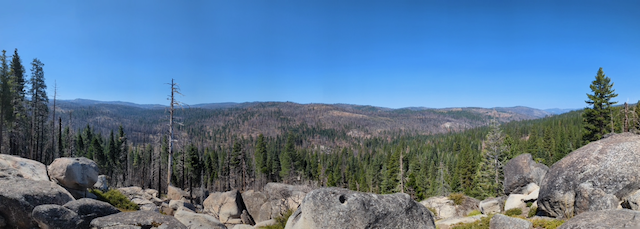Wildlife Resilience
Why care about resilience?

Naturally Sierra Nevada forests have evolved with fire, disease, pests, and drought. Resilient forests can persist, rebound, or regenerate after these disturbances. Ensuring forests are resilient is beneficial because healthy forests provide clean water, clean air, places to recreate, fire protection, and economic opportunities. However, more than a century of fire suppression and climate change has amplified the intensity and duration of these disturbances such that they may overwhelm the ability of forests to bounce back.
In the face of these mega disturbances, federal and state governments, industry, forest communities, private groups, and NGOs are all working together to increase the pace and scale of the restoration of forest resilience. But what does this resilience management mean for the conservation and enhancement of the state’s wildlife?

The link between forest resilience and biodiversity
Forests are very biodiverse, in fact, the world’s forests harbor the vast majority of terrestrial species (The State of the World’s Forests 2020 2020). Species provide critical ecosystem services including: pollination, seed dispersal, and pest and disease control. Importantly, biodiversity provides the raw material for ecosystems to respond to change, bounce back or completely regenerate after a major disturbance.
Resilience is the ability of an ecosystem to persist, rebound, or regenerate after disturbance.
Biodiversity: the variety of life, in all forms. This includes the variety of species, the interactions between these species, and other functions life performs in communities and ecosystems.
Health: healthy wildlife communities are resilient and support of a variety of ecological processes.
Wildlife community resilience
One goal of conservation and management is to support the health and resilience of forested landscapes. Biodiversity is important for enhancing both. However, evaluating resilience alone or links between biodiversity, health and resilience is challenging. To address this challenge, the Wildlife Resilience Project is developing metrics to bring biodiversity and forest structure together to quantify and evaluate wildlife community health and resilience.
To learn more, see Biodiversity.